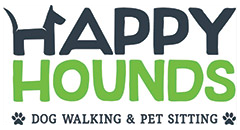How To Store Kibble Correctly
Despite us being advocates for feeding your furry companions raw fresh food, we know that this way of feeding isn’t always possible for all pet parents. If you’re not feeding your pets are raw diet, chances are you’re feeding them a dry-food based, kibble diet. While we’re not going to go into the pros and cons of feeding your pets a raw or dry-food diet (a blog for another day!), we’re instead going to address the mistakes of storing kibble and what you can do to better safely feed your pooch.
Much like human food, kibble also has the potential to spoil when it isn’t handled and stored correctly. The dry, solid feel of kibble often makes pet parents believe that it’s something that will last for months, if not a year, but this is certainly not the case. If we value the health and well-being of our pets, we should be looking at ways to adopt safer food storage.
Pouring Kibble Into a Different Container or Bag
The first common mistake that pet parents make is pouring their dog’s kibble into another bag, container or bucket. I get it, a dog’s kibble bag isn’t always the prettiest, so we often want to put the kibble in a tin or container that we can place in the laundry or kitchen to match our home’s aesthetic look. Though it may look appealing, it’s not doing any wonders for our cats and dogs.
Pet dry food companies often spend millions of dollars trying to perfect their kibble bags. Not only is this to encourage you to purchase the bag when it’s sitting on your supermarket’s shelves, but also to help reduce the risk of the food going off. You may be tipping the kibble into a container that isn’t airtight, increasing the risk of it being exposed to oxygen, causing it to go rancid. Kibble bags also have an oil-resistant layer inside, which further acts as an added seal to keep the fat and oil inside and helping the kibble to retain its flavour.
Leaving a Bag of Kibble Unsealed
As mentioned previously, kibble doesn’t do so well when it’s exposed to air and oxygen. Leaving a kibble bag open, especially in a garage or pantry where it’s warm and humid, can cause the fats in the kibble to go rancid. It can also promote rapid bacterial and fungal growth. A 2019 study published in BMC Veterinary Research concluded that dust mites were found to invade bags of unsealed commercial dog foods, especially in areas of higher temperature and humidity. This is harmful to all pets, but especially to dogs that have allergies.
Topping up a container of kibble
If you already store your dog’s kibble in a container, make sure to completely empty and wash the container before topping it up with more kibble. If the older kibble already contains contaminants and lasting fat residue, chances are that you’re going to mix that with the new kibble you’ve just purchased. Giving the container a good clean with natural, dog friendly soap is ideal.
buying too much kibble
Don’t go buying large sized kibble bags that you think are bound to last multiple months, just because they’re on sale. Though the expiration date may be months away, as soon as you open that bag of kibble, it’s exposed to air and oxygen causing the oxidation process to begin. As the fats inside the kibble oxidise and begin to go rancid, the nutritional quality of the food decreases and becomes potentially harmful to your dog. Purchase smaller bags of kibble and avoid feeding your dog kibble from a bag that’s been open for 30+ days.
Clean Your Pet's FOOD and water Bowls
Finally, wash those bowls ! If a bowl is left unwashed for some time, it can develop biofilm, a gooey, slime-like substance that can contain harmful bacteria. This bacteria may reproduce, causing your pet’s food and water to become contaminated, resulting in bladder infections, urinary tract infections and more. So, make sure to often clean your pet’s bowl with warm water and dog-friendly soap and top up with fresh water everyday.
For more information on how to store your pet’s food safely and whether dry food feeding is the best option for you, visit Healthy Pets with Dr Karen Becker.

